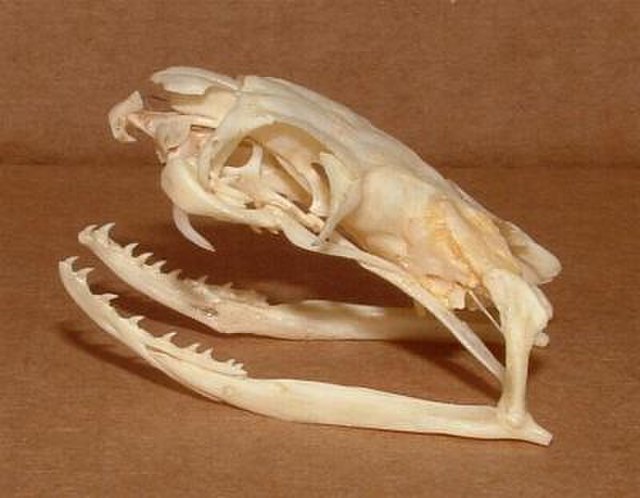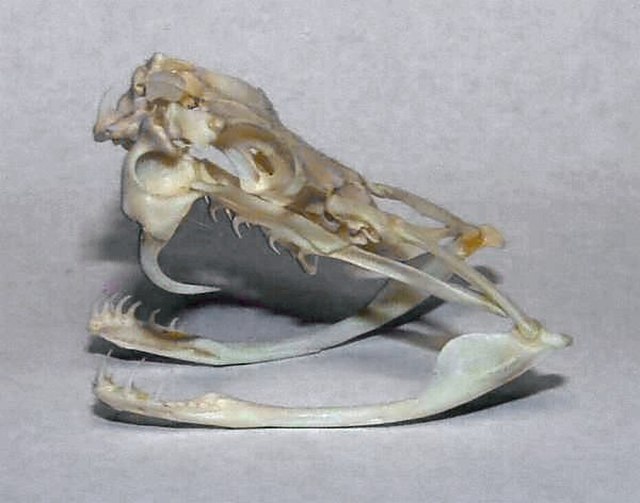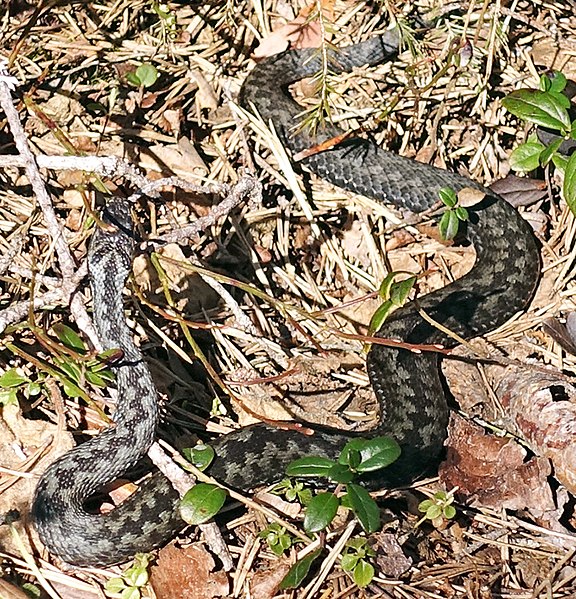A snake skeleton consists primarily of the skull, vertebrae, and ribs, with only vestigial remnants of the limbs.
Lateral view of the skull of a Burmese python, with visible kinetic joints labeled. Red = highly mobile, green = slightly mobile, blue = immobile.
An aglyphous snake. A Burmese python skull (Python bivittatus)
An opisthoglyphous snake. A hognose snake skull (Heterodon nasicus)
A proteroglyphous snake. A king cobra skull (Ophiophagus hannah)
The Viperidae (vipers) are a family of snakes found in most parts of the world, except for Antarctica, Australia, Hawaii, Madagascar, New Zealand, Ireland, and various other isolated islands. They are venomous and have long, hinged fangs that permit deep penetration and injection of their venom. Three subfamilies are currently recognized. They are also known as viperids. The name "viper" is derived from the Latin word vipera, -ae, also meaning viper, possibly from vivus ("living") and parere, referring to the trait viviparity common in vipers like most of the species of Boidae.
Viperidae
A rattlesnake skull, showing the long fangs used to inject venom
Arabian Horned Viper from Arabian Peninsula
Vipera berus pictured in Laukaa, Finland, in May 2020








